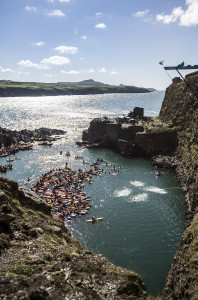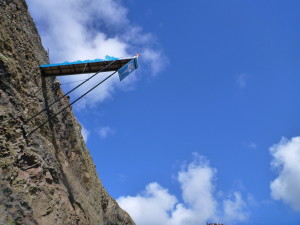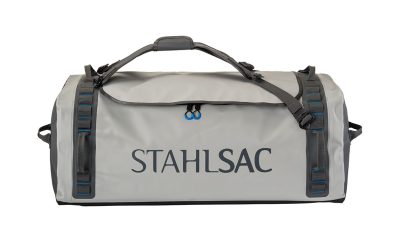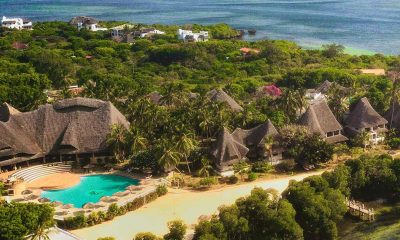News
Red Bull Cliff Diving World Series: Freediver Safety Perspective
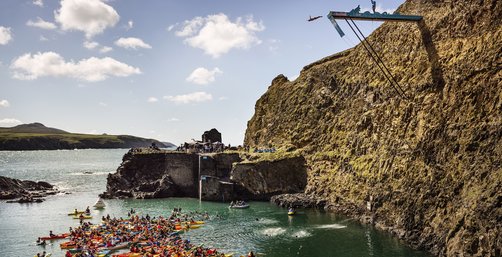
[youtube id=”4iJsMFM_gcU” width=”100%” height=”350px”]
After a busy day preparing for a record attempt I trawled through my information stream of e-mails. In the Inbox was a welcome sight. The organiser of the safety crew for the Red Bull Cliff diving World Series had contacted me, asking if I was interested in doing the diving safety for the 2013 event in Abereiddy, South Wales at the Blue Lagoon. Information had already started to filter through to me about this event a few weeks before, and I had googled a previous year’s competition, and seen the location and the whole thing just looked stunning.
I duly accepted the role of being on the surface of the water as the athletes dived from the 27 metre high diving board. We were to follow the Divers down into the water and deal with the potential of unconsciousness or spinal injury or simply winding of the athlete. I might add at this point due to the nature of the set up, and the skill of the athletes, this is another example of an extreme sport where there are very few injuries. But like any sport, even the sports that on the surface look like there are small risks only, accidents can happen.
I was asked to take a second freediver with me for additional support that had the required abilities. Given it was a 4-5 day contract, and located down South, I chose my good friend Sam Still. We have entrusted our lives to each other on innumerable occasions as safety divers for our own sport for almost exactly a decade now. The team was coming together; in addition to us, there was a very experienced scuba diver to deal with the potential of a deep prolonged incident, a paramedic on a jet ski operated by a Jet ski rescue driver/instructor (in case a diver needed a quick transfer to shore), both of whom had done the previous year’s competition, and of course the organiser, who had the experience of last year’s event. We were part of an experienced team.
On the shore were advanced paramedics, coastguard, various methods of transferring casualties and plenty of medical equipment for all eventualities. My hats off to the Red Bull team – when they do something, they do it properly! No cutting corners, no expense spared in safety. An entire pontoon was set up to deal with an incident; it was never needed, but doesn’t detract from it being there.
Wednesday 11th September 2013: Set up
Thursday 12th September 2013: Training
Friday 13th September 2013: Qualifying dives
Saturday 14th September 2013: Competition Day
On the morning of the set up we travelled with the crew to the venue. We parked up right next to the sea, right on the South West Wales coast, a beautiful beach to launch the armada of craft that we would eventually take over the lagoon. We decided firstly to go and view the venue – what an amazing place. I travel all around the world and this is certainly a unique place. Like a Roman amphitheatre, with a deep water pool at the bottom, with access and egress only possible around and over steep cliffs or at high tide, you could take vessels of all sizes through the narrow entrance to the bottom of the amphitheatre.
Enough time already spent, it was the beginning of what turned out to be a 12 hour day. I put many of the skills I’d learned from my two decades on and around water to good use – drove RIBS, set up platforms, towed RIBs, kayaked, tied knots, made shot lines, made buoyed off areas, depth sounded the entry points and many more useful jobs.
On training day we were fortunate to have experienced cliff diver Joey Zuber, now a TV presenter, organiser and motivational speaker. The training consisted of lots of descriptions of how the cliff divers dive, how they may spin, how far away they would land and what was the most likely outcome of a bad dive etc… He also told us about his worst accident where he smashed his femur; what made matters worse was his location in a remote part of Columbia, but that is another whole story in itself.
We learnt that the stream of water that was at the bottom of the cliff was actually so the athletes can judge where the water is to perfect their landing, so we took that job very seriously. We did get ribbed by some of my students who had travelled to see the show that we were just the ‘splashers’.
The Underwater spinal position they wanted to put the divers in was very similar to our normal lifting procedure, once we had ‘got our eye in’ on how deep and at what speed the athletes got to that depth we could pinpoint every single time in the bad visibility water (maybe 2 metres?) where to be. We decided I’d go shallow and quick, so maybe to 2 metres each dive, and Sam would go below the plume of water the diver produced and get any deeper problems, maybe 4 metres. I was extremely surprised how shallow the athletes went even on perfect dives; they were coming up in a couple, few seconds nearly every time.
We practised the transition for getting an injury from the original underwater rescue to shore. A single Freediver lifts the Cliff Diver to the surface and stabilises with Scuba diver to assist in positive buoyancy. The other Freediver gets the spinal board from the Jet Ski and positions it under the diver. Once the diver is on the board it is slid onto the back of Jet Ski, which then travels to shore, maybe 50 metres away. We got the victim from being underwater to being on the shore with the larger group of Paramedics literally within 20 seconds. It was slick! This gave us great confidence that the job in hand was within our capabilities.
The real test started once the athletes started their warm up dives. More than once, there was a stream of Cliff Divers leap from the 27m platform, one after another. We literally power dived down for the first, swam to the surface, checked they were okay and on the Jet Ski they went back to shore. As soon as we then look up to the platform the next diver was there ready to soar through the air into the water. So with no time to hang about we would swim quickly back to our set positions, where the Cliff Divers would occasionally gave us specific instructions at to where they wanted us, as each had their own preference near or far. Once they were happy we would all signal that were ready and then we started to splash hard to make their entry visible. They’d take some steps back, stretch, then they’d walk forward and dive, we’d start to breath in as they left the platform and as soon as they hit the water, about 3 seconds later, we would hold our breath and dive after them, swimming frantically over to them, follow them up, see they are okay, lie on our back to signal to the next cliff diver….
It was one of those repetitive series of actions where you can just forget about everything in the world except your specific reason for being there. The brief times of rest in between I would lie on my back, watching a cliff diver walk over to the edge of the platform, then watching the clouds in the blue sky behind the diver’s silhouette as they slowly drifted behind the cliffs, the warm sun on my face… and then they’d jump, everything would start to go into slow motion as I got more into the zone… nice.
The divers came quick because the water was cold and they wanted to get back into the hot tub. South Wales, even in August, in just a tiny pair of speedos is only for the hardy.
The competition day came soon enough. We had met the athletes a few times over lunches and dinners and they are a sound bunch, genuinely great people; we knew we had to be there for them. An armada of kayaks and boats started to filter through into the lagoon and find their spot. Hundreds of spectators lined the cliffs, the water’s edge and some even in the water. The amphitheatre was full, full of excited viewers and the athletes never failed to impress.
Find out more about the Red Bull Cliff Diving World Series here
Gear News
Go anywhere with Stahlsac
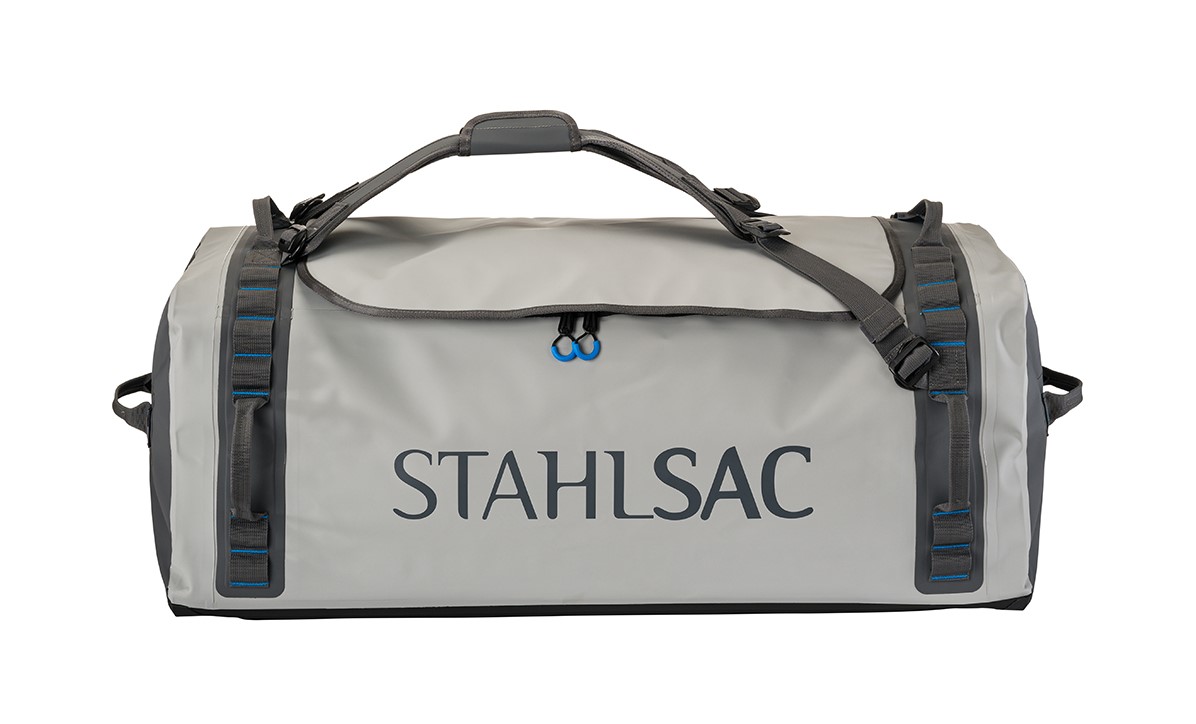
Stahlsac dive bags and travel luggage are built for our community of divers, surfers, kayakers and outdoor explorers who need bags that are constructed with durability, toughness, and 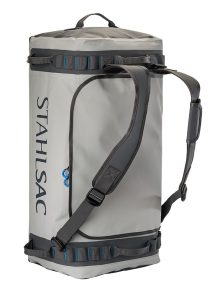 the highest quality the industry has ever seen. We were founded by one man determined to build better watersports and dive bags, and today, that mission is carried on by many. Adventure doesn’t just present itself; it requires discovery. When we design dive bags, we make sure they are tough enough for you to explore in all conditions—warm and cold, wet and dry—to the nearest and farthest reaches of the earth. And for those times you want to push the boundaries of adventure, Stahlsac dive bags make sure you can truly GO ANYWHERE.
the highest quality the industry has ever seen. We were founded by one man determined to build better watersports and dive bags, and today, that mission is carried on by many. Adventure doesn’t just present itself; it requires discovery. When we design dive bags, we make sure they are tough enough for you to explore in all conditions—warm and cold, wet and dry—to the nearest and farthest reaches of the earth. And for those times you want to push the boundaries of adventure, Stahlsac dive bags make sure you can truly GO ANYWHERE.
Abyss Duffels
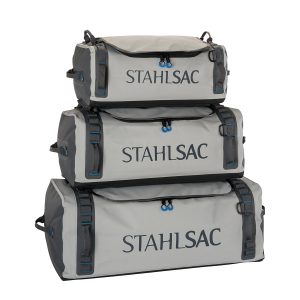 Made to be your partner-in-crime on every adventure, Stahlsac’s Abyss Duffels protects your gear from Mother Nature’s worst. Tough and 100% waterproof with double-TPU nylon material that shrugs off daily wear-and-tear, and RF-welded seams further boost the bag’s potential for lifelong exploring. Get Wet. Get Lost. Go Anywhere with Abyss.
Made to be your partner-in-crime on every adventure, Stahlsac’s Abyss Duffels protects your gear from Mother Nature’s worst. Tough and 100% waterproof with double-TPU nylon material that shrugs off daily wear-and-tear, and RF-welded seams further boost the bag’s potential for lifelong exploring. Get Wet. Get Lost. Go Anywhere with Abyss.
- A weatherproof duffel for trips, travel, and adventure
- Ultra-durable double-TPU nylon protects your gear
- Material repels water and keeps your equipment dry
- RF-welded seams are flush, tough, and waterproof
- Removable straps transform duffel into backpack
- Zippered internal stow compartments carry essentials
- External zippered flap is easy to open and close
- Welded external handles make transporting a breeze
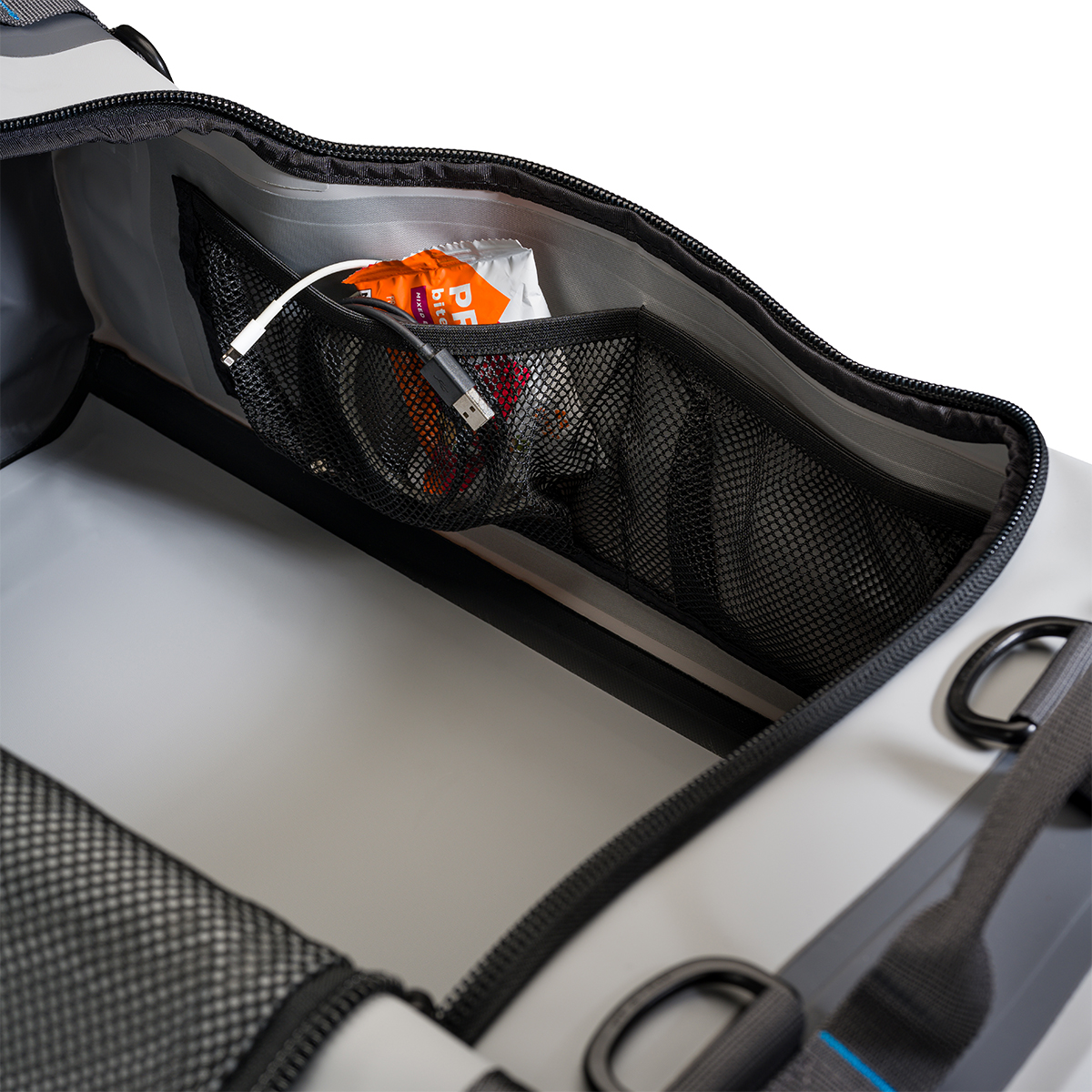
Panama Mesh Backpack
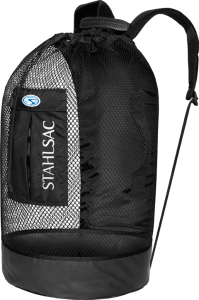 The most copied design in scuba diving, the Stahlsac Panama Mesh Backpack is the “original” design and features two high-density foam padded shoulder straps, extra durable polyester mesh, duffel bag handles and our unique zippered dry pocket inside that combines with a wet pocket outside. The bottom’s built from reinforced 18-gauge PVC nylon to combat the wear and tear of your active coastal lifestyle, and, as a bonus in every bag, we supply a 12″ x 12″ mesh drawstring satchel for extra stowing utility. Pack up your beach kit and go.
The most copied design in scuba diving, the Stahlsac Panama Mesh Backpack is the “original” design and features two high-density foam padded shoulder straps, extra durable polyester mesh, duffel bag handles and our unique zippered dry pocket inside that combines with a wet pocket outside. The bottom’s built from reinforced 18-gauge PVC nylon to combat the wear and tear of your active coastal lifestyle, and, as a bonus in every bag, we supply a 12″ x 12″ mesh drawstring satchel for extra stowing utility. Pack up your beach kit and go.
- Density foam padded shoulder straps
- Outside wet/dry pockets
- 2 Carry handles
- Tough, snag-resistant polyester mesh
- Reinforced PVC bottom
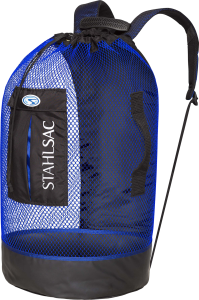
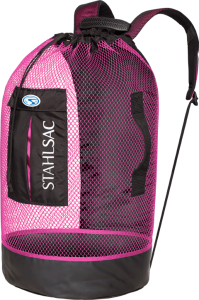
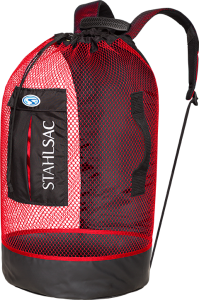
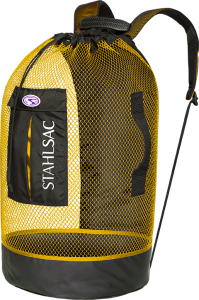
For more information about Stahlsac bags, visit www.stahlsac.com/dive-bags.
Sea & Sea is the home of Stahlsac and other leading diving brands in the UK.
Blogs
EXCLUSIVE: Jeff Goodman interviews Mark Spiers, CEO of New Scuba Diving Training Agency NovoScuba

In a video recorded exclusively for Scubaverse.com, Jeff Goodman interviews Mark Spiers, CEO of new scuba diving training agency NovoScuba.
Find out more about NovoScuba at www.novoscuba.com.
-

 News3 months ago
News3 months agoCapturing Critters in Lembeh Underwater Photography Workshop 2024: Event Roundup
-

 Marine Life & Conservation Blogs3 months ago
Marine Life & Conservation Blogs3 months agoCreature Feature: Swell Sharks
-

 Blogs2 months ago
Blogs2 months agoMurex Resorts: Passport to Paradise!
-

 Blogs2 months ago
Blogs2 months agoDiver Discovering Whale Skeletons Beneath Ice Judged World’s Best Underwater Photograph
-

 Gear Reviews3 weeks ago
Gear Reviews3 weeks agoGEAR REVIEW – Revolutionising Diving Comfort: The Sharkskin T2 Chillproof Suit
-

 Gear Reviews3 months ago
Gear Reviews3 months agoGear Review: Oceanic+ Dive Housing for iPhone
-

 News2 months ago
News2 months agoPADI Teams Up with Wellness Brand Neuro to Drive Ocean Change and Create a Blue State of Mind
-

 Marine Life & Conservation2 months ago
Marine Life & Conservation2 months agoSave the Manatee Club launches brand new webcams at Silver Springs State Park, Florida


